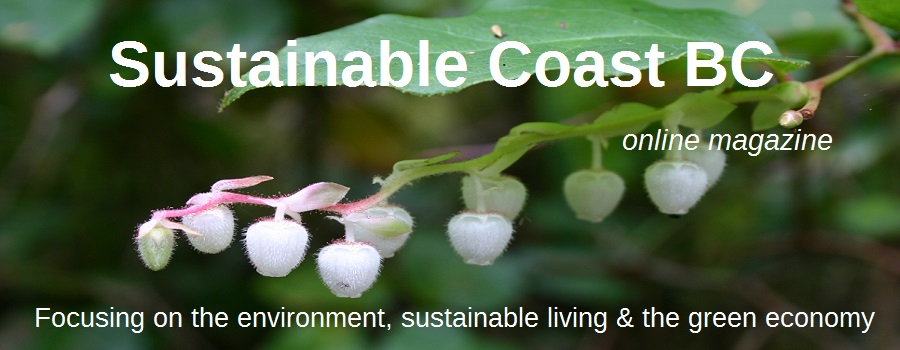News
Friends of Gospel Rock presented a report comparing the Gibsons OCP guidelines and policies to the proposed Gospel Rock Neighbourhood Plan, December 6 at a regular Gibsons Council meeting.
The report was prepared for the Friends of Gospel Rock Society (FOGRS) and vetted by a lawyer, a specialist in municipal law.
Based on an analysis of the draft Land Use Concept proposed by the Gospel Rock Refinement Working Committee, the Friends’ report makes 14 recommendations. Delegation presenter Suzanne Senger said, “We offer these recommendations in the spirit of being useful to you and the Town’s staff in your deliberations.”
She asked Council to ensure that the Town’s consultant takes these recommendations into consideration as the next draft of a Gospel Rock Neighbourhood Plan is prepared.
As the report makes clear, the Land Use Concept presented by the refinement committee is fundamentally untenable, according to the Friends. The inconsistencies between it and the community values embedded in the OCP are “egregious and numerous,” Senger said.
The report, "Analysis of Town of Gibsons Official Community Plan Requirements, Goals, Objectives, Guidelines, and Policies as They Apply to Lands in the Proposed Gospel Rock Neighbourhood Plan Area" [pdf] details 27 inconsistencies.
As just one example, the OCP Objective, page 23, states: “Minimize risks to life and property from natural hazards and disasters such as floods, erosion and slides.”Gospel Rock Neighbourhood lands pose known hazards to downslope development both in the Bayview Heights subdivison below Block 3 and in the Gibsons bay area. Flooding, landslide, debris slides, mudslides, culvert blockages, and streambed shifts are all hazards that have been identified in geotechnical assessments (since 1981). The Town has not yet built recommended works to ensure citizen safety (called for in the Dayton and Knight report and the Thurber report and referred to in the most recent Golder report). The LUC recommendations contain no plans for the required mitigating works. Therefore, concludes FOGRS, the Land Use Concept is not consistent with Council’s OCP objective to minimize risks to life and property.
The Friends’ report identifies 26 more inconsistencies.
“With all due respect, it is our opinion that the Town has not been well served by its consultant on the Gospel Rock Refinement Working Committee, nor have the property owners been well served by their representative on the Committee,” Senger stated. Instead of a refinement of options A and B, this draft Land Use Concept “presents regressive ideas already refused by the community, concepts that in some cases are legally impossible to implement. We are going backward instead of forward in the desire we all have to resolve this long-standing issue.”
The report includes nine attachments, some dealing with past applications for rezoning of Gospel Rock land and past legal cases. Many are from earlier developers and scientists.
“The Friends of Gospel Rock’s report offers clear parameters within which to begin to come up with a reasonable plan for the future of Gospel Rock,” said Senger, who reiterated the commitment of FOGRS to work with Council and staff toward a resolution of the longstanding community issue.
RECOMMENDATIONS: It is our opinion that before it can be adopted, the GRNP—P needs, at a minimum, to include commitments that the proponents, including the Town where applicable, will:
- Undertake a complete drainage/storm water analysis and plan with details of on-site retention works, limits to impervious surfacing, and plans for runoff reduction and the siting of these in the plan area
- Do no development in the ravines on Block 6 and include a setback from development around each of the ravines of 30m as recommended the BC Ministry of Environment 2004
- Limit overall residential unit development in the plan area
- Have an Archaeological Assessment performed with input from the Squamish First Nation which includes mapping of and preservation plans for the sites identified in that assessment
- Map important and unique natural features (e.g., “footprint” and “stone circle”) and draw up a preservation plan
- Identify and arrange protection for sites of historical significance, like the quartz cross and the slope west of the Rock, below the road, which provides the only access to the beaches below
- Ensure forest preservation below Oceanmount, through to Gospel Rock lands
- Maintain trails along ravines, and where necessary, carry out the works required to protect the banks from negative impacts of that use
- Withdraw plans for development uses in all Greenbelt areas
- Have a habitat mapping study performed, with newly identified areas of critical habitat protected from development with DPA setback areas, as recommended by the Ministry of Environment, this mapping to include the “wall” of protective trees below Gower Point Road recently identified and documented (PvP March 2010) as forming the critical and essential function of sheltering the upland arbutus forest from erosive effects of prevailing maritime wind exposure
- Undertake no development and no uses at all on the marine backshore below Gower Point Road
- Map the freshwater seeps east of Gospel Rock below Gower Point Road, which Have been newly identified as a sensitive ecological system
- Include parkland dedications on flat land other than DPA1 or 2 or Greenbelt areas
- Designate for preservation the land located in polygon 82, implement measures to minimize pedestrian uses on it, and include a 30m setback (as per provincial recommendations 2004 for “sensitive ecosystems”).
